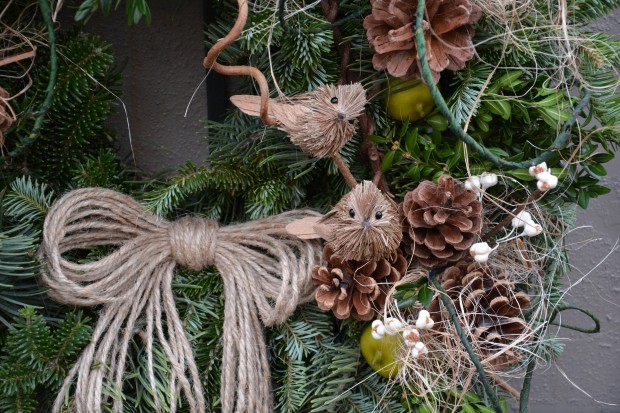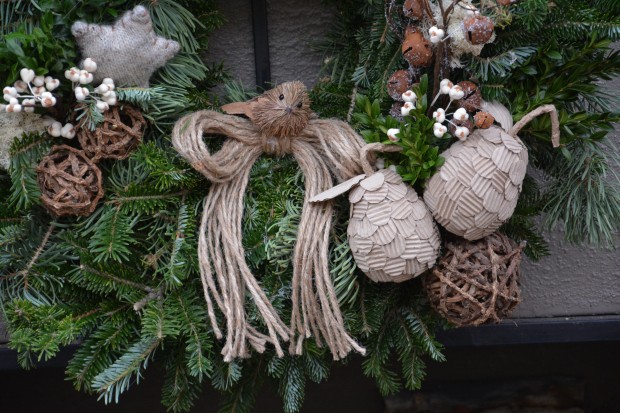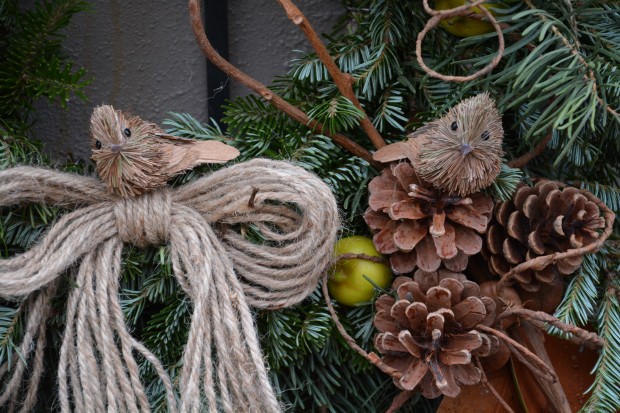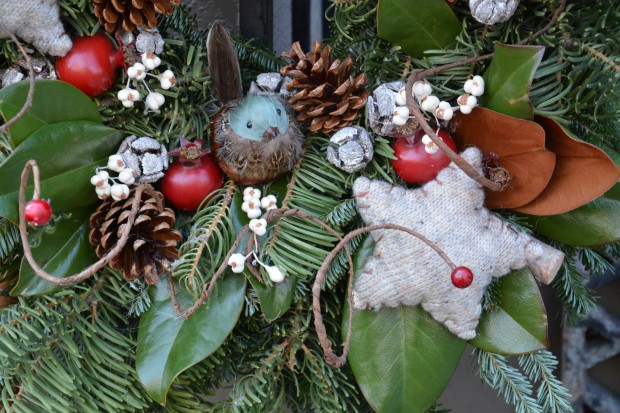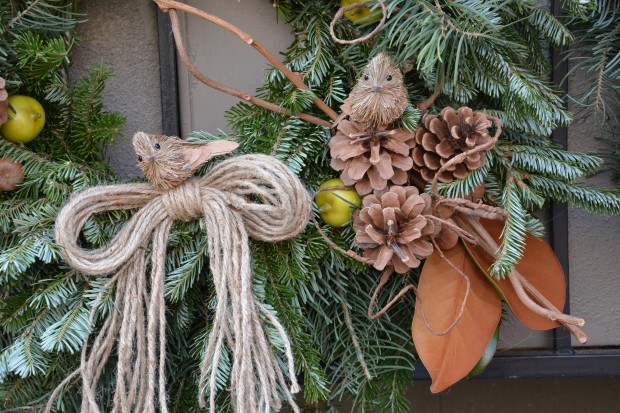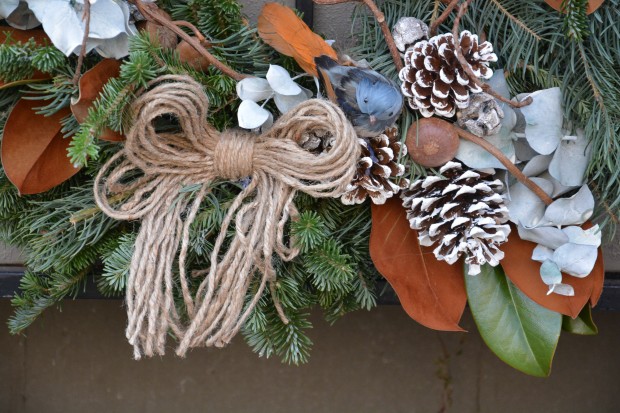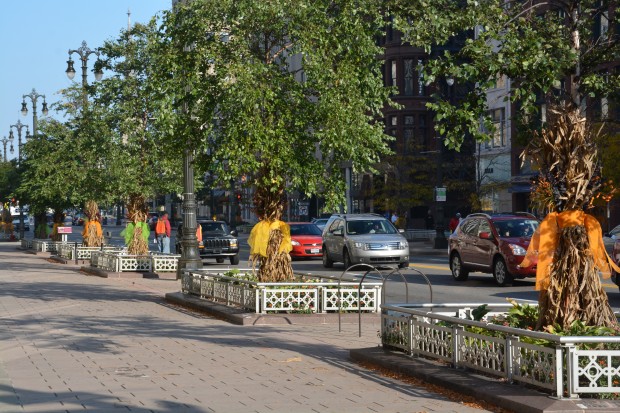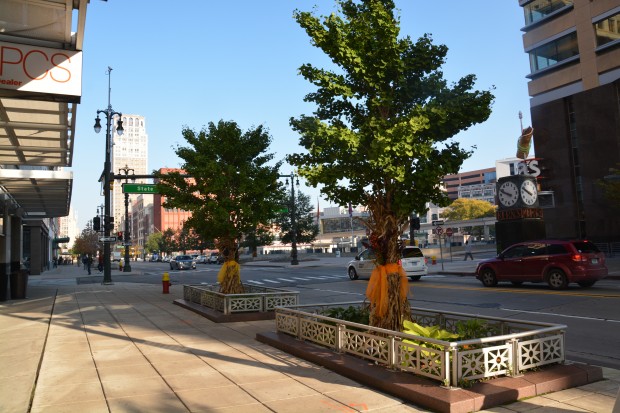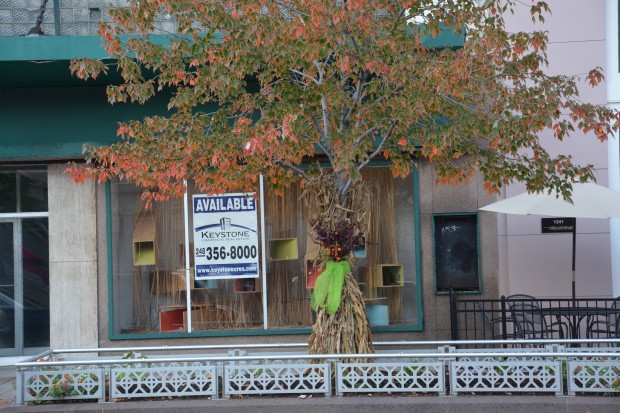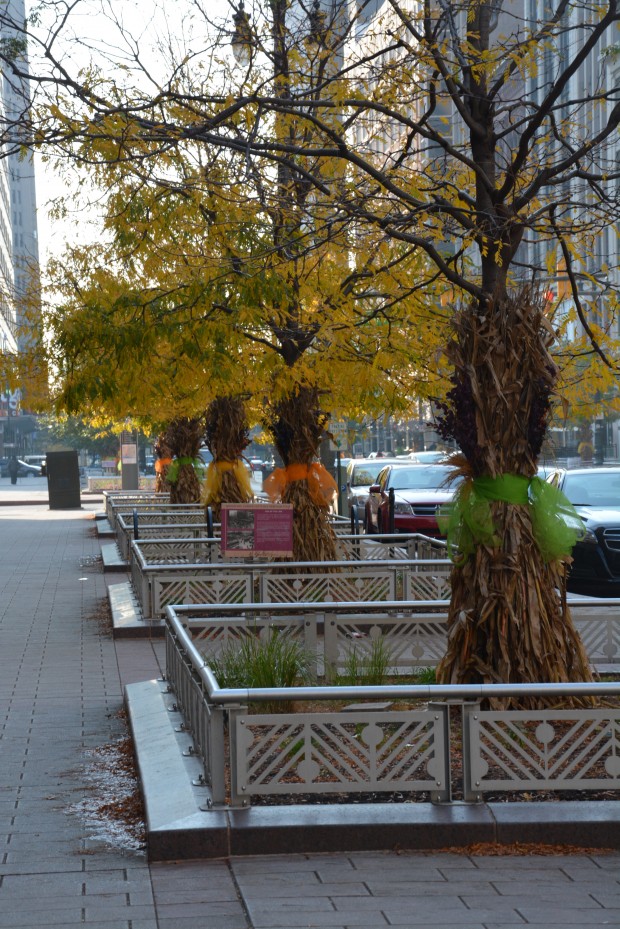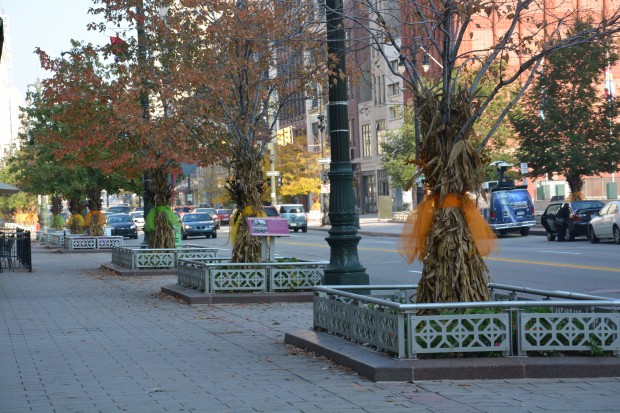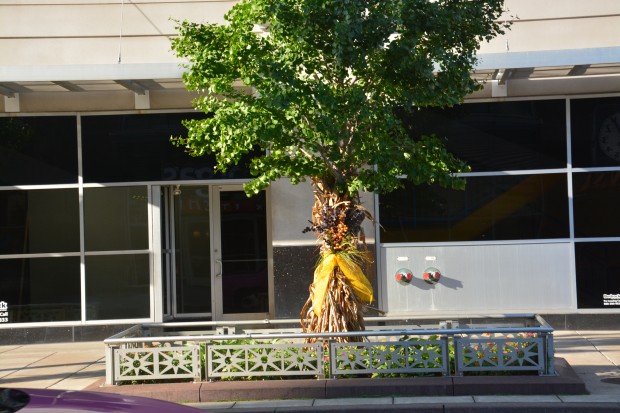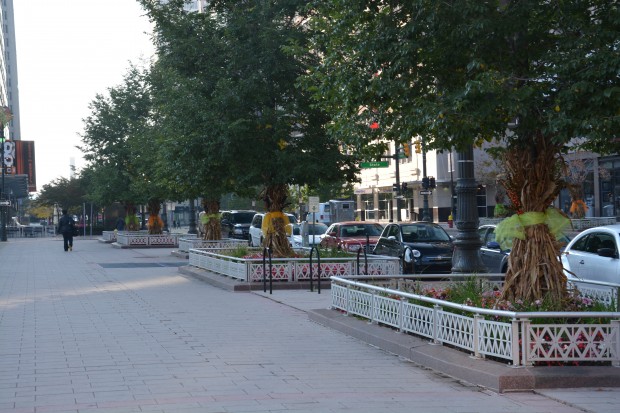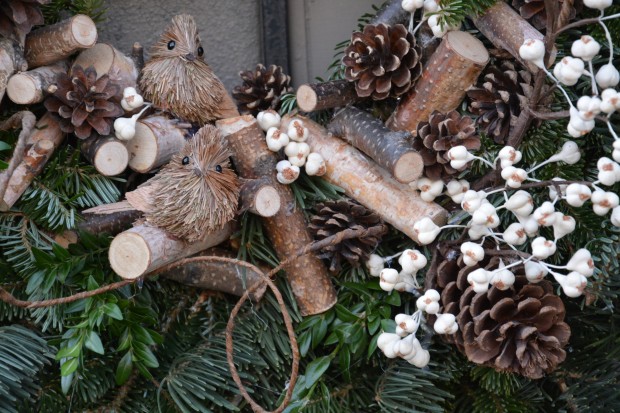
It does not matter whether you are stitching a quilt, designing a garden, composing a song, painting a picture, or writing a book-the creative process is a very special state of mind. I don’t know that I could describe it very well, except to say that the moment when all of ones every day cares and obligations drop away, and all that is left is a collection of thoughts, a vocabulary, some tools, and a willing hand is a precious moment indeed.
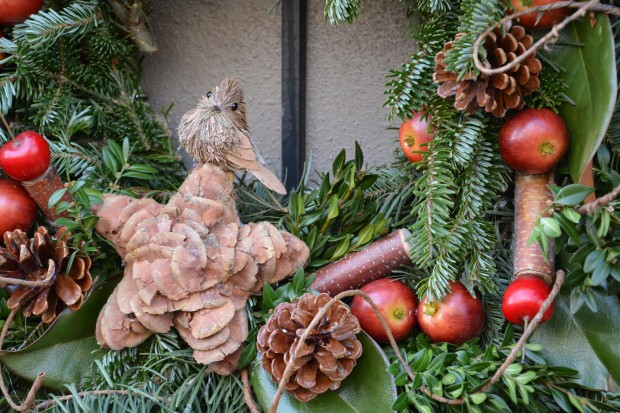 Wreath making is a personal description of the natural world, on a small scale. One can easily hang the work on the front door. It could be complex and rich. It could be simple and spare. It could be Williamsburg like in feeling. It could be funny, or operatic. It could be anything. Imagining the possibilities is work well worth the time it takes to imagine.
Wreath making is a personal description of the natural world, on a small scale. One can easily hang the work on the front door. It could be complex and rich. It could be simple and spare. It could be Williamsburg like in feeling. It could be funny, or operatic. It could be anything. Imagining the possibilities is work well worth the time it takes to imagine.
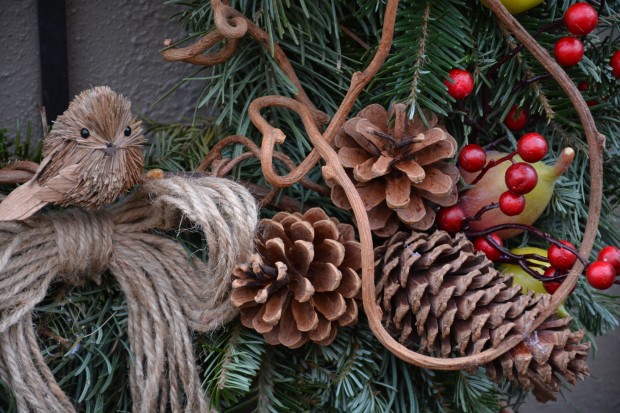 This 18 wreath project is a project I treasure, as it gives me the time and the space to focus, express, interpret, try out, fiddle and fuss. It would never occur to me to judge the importance or lack thereof regarding a holiday wreath. What is important is the making. Making is very important to my life-just like it is to so many other people. Making it to work on time, making a sculpture, making a solution, making dinner-people make things. There is an art to a life, but there is also a craft.
This 18 wreath project is a project I treasure, as it gives me the time and the space to focus, express, interpret, try out, fiddle and fuss. It would never occur to me to judge the importance or lack thereof regarding a holiday wreath. What is important is the making. Making is very important to my life-just like it is to so many other people. Making it to work on time, making a sculpture, making a solution, making dinner-people make things. There is an art to a life, but there is also a craft.
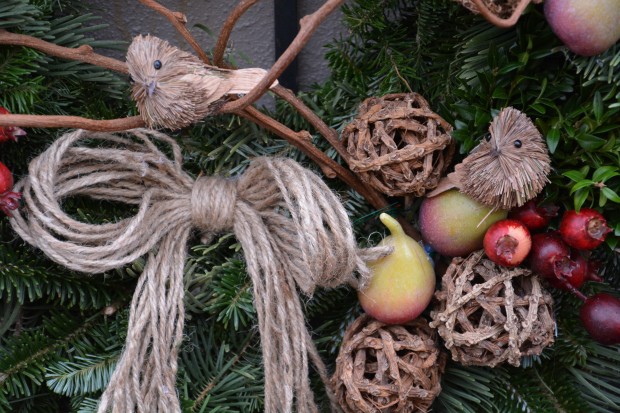 We are pretty busy right now. The holiday pots, the holiday decorating, the lighting, the clients interested in our take on how to dress their front porch winter, or how they should set a holiday dinner party table. We are in the thick of it. I rather like all the commotion. But I also like those moments when the work is not really work. Those moments spent crafting a story. There is a story about the relationship of one material to another, the scale, the texture, the color-the line and direction. The story I interpret for a client. The season, the materials.
We are pretty busy right now. The holiday pots, the holiday decorating, the lighting, the clients interested in our take on how to dress their front porch winter, or how they should set a holiday dinner party table. We are in the thick of it. I rather like all the commotion. But I also like those moments when the work is not really work. Those moments spent crafting a story. There is a story about the relationship of one material to another, the scale, the texture, the color-the line and direction. The story I interpret for a client. The season, the materials.
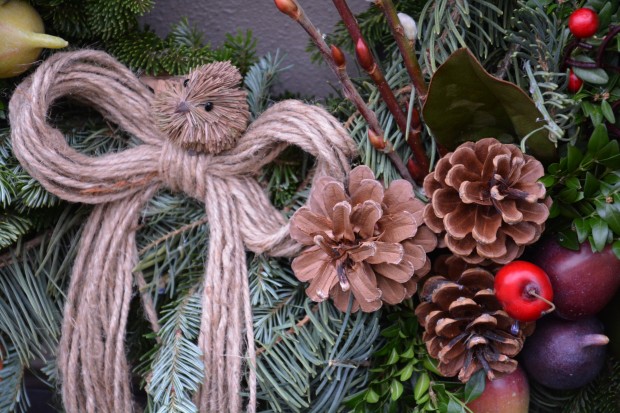 If you are keen to design and make, you know exactly what this moment feels like. These 18 wreaths will be shipped out tomorrow. I hope that each and every person scheduled for a holiday wreath from my client will enjoy them. I know I thoroughly enjoyed making them.
If you are keen to design and make, you know exactly what this moment feels like. These 18 wreaths will be shipped out tomorrow. I hope that each and every person scheduled for a holiday wreath from my client will enjoy them. I know I thoroughly enjoyed making them.

